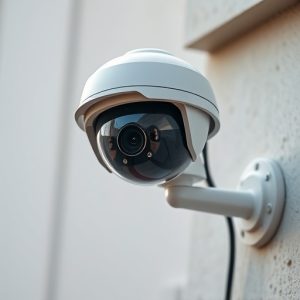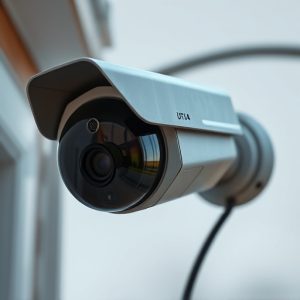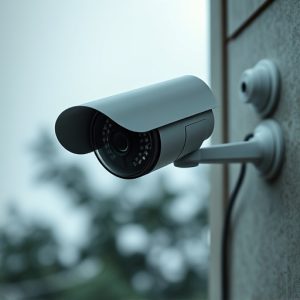Fake CCTV Camera Installation: Deterring Crime with Visual Impact
Fake CCTV cameras effectively deter unauthorized activities by simulating extensive monitoring, redu…….
Fake CCTV cameras effectively deter unauthorized activities by simulating extensive monitoring, reducing crime rates and enhancing security without actual surveillance devices. Strategically placed in visible areas, they create an impression of heightened surveillance, manipulating intruders' behavior. Installation involves careful planning and testing to ensure optimal deterrent effectiveness while adhering to legal and ethical considerations to avoid infringing on civil liberties. Their psychological impact is significant for minor offenses but may not deter skilled criminals or lead to inadequate resource allocation if overreliant.
“Uncover the power of mock surveillance systems as a powerful deterrent in this comprehensive guide. Explore ‘Understanding Fake CCTV Cameras’ to grasp their role in enhancing security without the hefty cost. Learn how ‘Choosing the Right Visuals and Placement’ can maximize impact, from strategic positioning to realistic designs. Dive into our step-by-step ‘Installation Process’ for a seamless setup. Balancing ‘Legal Considerations’ and ethical use, this guide also evaluates ‘Deterrent Effectiveness’ and potential drawbacks, offering insights for responsible security solutions.”
- Understanding Fake CCTV Cameras: Their Role as a Deterrent
- Choosing the Right Visuals and Placement for Maximum Impact
- Installation Process: A Step-by-Step Guide
- Legal Considerations and Ethical Use of Mock Surveillance Systems
- Evaluating Effectiveness and Potential Drawbacks
Understanding Fake CCTV Cameras: Their Role as a Deterrent
Fake CCTV cameras play a crucial role in enhancing security and deterring potential criminals, even though they are not genuine surveillance devices. These mimicry cameras act as a powerful psychological tool by giving the appearance of extensive monitoring. Their mere presence can significantly reduce the likelihood of unauthorized activities, as would-be intruders may perceive them as a serious obstacle.
The deterrent effectivity of fake CCTV cameras is often overlooked, but research suggests that their impact on crime rates is substantial. The perception of constant surveillance discourages illegal behavior, creating an environment where criminals are more likely to avoid targeted areas. This simple yet effective strategy can transform public spaces and residential neighborhoods, making them safer for everyone.
Choosing the Right Visuals and Placement for Maximum Impact
When designing a mock surveillance system, one of the most effective strategies is to understand the power of visual deception. The placement and choice of fake CCTV cameras can significantly enhance security while creating a strong deterrent effect. By strategically positioning these realistic-looking but functional replicas, you can create an impression of heightened security, deter potential criminals, and even reduce genuine crimes in the area.
Visual impact is key; high-quality fake cameras with intricate details mimic authentic surveillance equipment. Place them in visible areas where they will be easily noticed by intruders, such as entry points, high-risk zones, or anywhere that requires enhanced monitoring. This psychological manipulation can significantly alter an individual’s behavior, making them more cautious and less likely to engage in illegal activities. The deterrent effect of a well-designed mock surveillance system is a powerful tool for any property owner or business aiming to enhance their security measures.
Installation Process: A Step-by-Step Guide
The installation process for a mock surveillance system, featuring fake CCTV cameras, is a straightforward yet impactful step-by-step guide that can significantly enhance security and deter potential criminals. Begin by carefully planning the placement of the cameras, ensuring strategic positioning throughout the area to be monitored. This involves considering factors like field of view, lighting conditions, and obstructions that might affect camera visibility. Once the ideal locations are identified, mount the fake CCTV cameras firmly in place, leveraging hardware designed for durability and discreetness. It’s crucial to ensure these cameras mimic real counterparts as closely as possible to maximise their deterrent effectiveness.
After mounting, connect each camera to a central control system, typically a DVR (Digital Video Recorder). This involves running cables from each camera location to the recording device, ensuring secure connections that allow for seamless video transmission and storage. Configure the system settings according to your security needs, including camera resolution, recording schedules, and motion detection parameters. Regular testing of the system’s functionality is essential, allowing you to verify image quality, ensure all cameras are operational, and confirm the system’s overall deterrence capabilities against would-be intruders.
Legal Considerations and Ethical Use of Mock Surveillance Systems
When installing a mock surveillance system, it’s crucial to understand the legal considerations and ethical implications that come into play. While fake CCTV cameras can serve as an effective deterrent for potential criminals, their use must adhere to local laws and regulations regarding privacy and security. It’s essential to ensure that these systems do not infringe on any individual’s civil liberties or create an atmosphere of excessive surveillance.
The deterrent effect of fake CCTV cameras is well-documented, as the mere presence of these devices can deter criminal activity by making perpetrators feel they are being watched. However, it’s important for property owners and businesses to use these systems responsibly, respecting the boundaries set by legal frameworks. This includes proper placement, ensuring visibility only in public areas, and avoiding any form of data collection or storage, as this could lead to severe legal consequences and ethical controversies.
Evaluating Effectiveness and Potential Drawbacks
When evaluating the effectiveness of a mock surveillance system, it’s crucial to consider both its deterrence capabilities and potential drawbacks. Fake CCTV cameras can be an effective deterrent against criminal activity due to their visible presence, mimicking real surveillance equipment. This psychological impact can discourage would-be offenders from targeting areas with apparent security measures in place. Research suggests that the simple act of installing fake cameras can lead to a noticeable reduction in crime rates, particularly for low-level offenses.
However, there are also several potential drawbacks to keep in mind. Skilled criminals might quickly realize the difference between genuine and mock cameras, rendering the deterrent effect less powerful. Additionally, an overreliance on fake surveillance could lead to a false sense of security, encouraging areas to allocate fewer resources to actual security measures. It’s essential to balance the benefits of deterrence with the risk of creating vulnerabilities in overall security strategies.
In conclusion, fake CCTV cameras can serve as an effective deterrent for potential criminals, providing a sense of security without the actual cost and complexity of a full surveillance system. By strategically placing these realistic mock devices, individuals and businesses can deter unlawful activities while learning from their environment’s vulnerabilities. As with any security measure, it’s crucial to balance effectiveness with ethical considerations. Following our comprehensive guide on installation, legal aspects, and evaluation, we encourage readers to explore the potential of fake CCTV cameras as a cost-efficient solution for enhancing safety in various settings.


